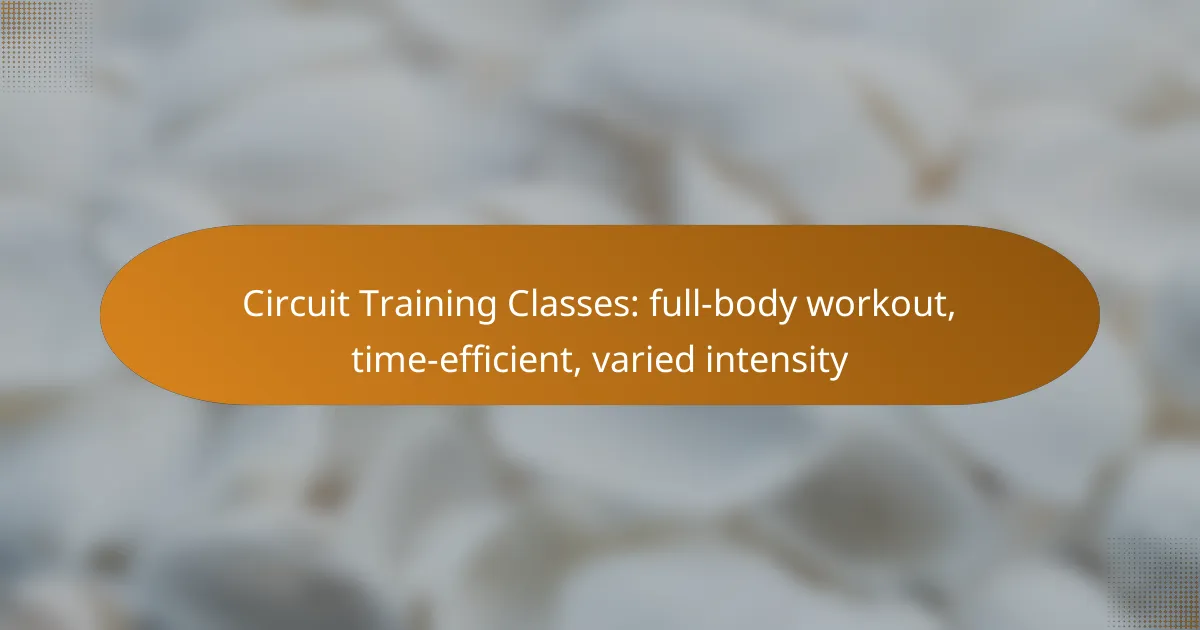Bodyweight training is an effective way to build functional strength using your own body weight as resistance, making it accessible to everyone. With exercises like push-ups, squats, and lunges, you can enhance your fitness, improve endurance, and increase flexibility without any equipment. This versatile training method allows you to achieve your fitness goals anywhere, anytime.

What are the best bodyweight training exercises for functional strength?
The best bodyweight training exercises for functional strength include push-ups, squats, planks, lunges, and burpees. These exercises engage multiple muscle groups and improve overall strength, stability, and coordination without the need for equipment.
Push-ups for upper body strength
Push-ups are an effective exercise for building upper body strength, targeting the chest, shoulders, and triceps. To perform a push-up, start in a plank position with your hands slightly wider than shoulder-width apart, then lower your body until your chest nearly touches the ground before pushing back up.
For beginners, knee push-ups can be a suitable modification. Aim for sets of 8-15 repetitions, gradually increasing as you gain strength. Ensure proper form to avoid strain on the shoulders and lower back.
Squats for lower body strength
Squats are essential for developing lower body strength, primarily working the quadriceps, hamstrings, and glutes. Stand with your feet shoulder-width apart, then lower your body as if sitting back into a chair, keeping your chest up and knees aligned with your toes.
Perform 10-20 repetitions per set, focusing on depth and control. Variations like jump squats or single-leg squats can increase intensity as you progress. Always prioritize form to prevent injury.
Planks for core stability
Planks are a cornerstone for enhancing core stability, engaging the abdominal muscles, back, and shoulders. To execute a plank, position yourself face down, supporting your body on your forearms and toes, maintaining a straight line from head to heels.
Hold the plank for 20-60 seconds, gradually increasing the duration as your core strengthens. Avoid letting your hips sag or rise too high, which can lead to strain. Side planks can also be incorporated for additional oblique engagement.
Lunges for balance and coordination
Lunges improve balance and coordination while strengthening the legs and glutes. To perform a lunge, step forward with one leg, lowering your hips until both knees are bent at about a 90-degree angle, then push back to the starting position.
Try alternating legs for 10-15 repetitions per side. Variations like reverse lunges or walking lunges can enhance difficulty. Focus on maintaining an upright posture to avoid knee injuries.
Burpees for full-body conditioning
Burpees are a dynamic exercise that combines strength and cardio, working multiple muscle groups simultaneously. Start in a standing position, drop into a squat, kick your feet back into a plank, perform a push-up, return to squat, and jump up explosively.
Perform 5-15 burpees per set, depending on your fitness level. This exercise can be intense, so modify by skipping the push-up or jump if necessary. Burpees are excellent for boosting endurance and overall fitness.

How can bodyweight training improve fitness without equipment?
Bodyweight training enhances fitness by using your own weight as resistance, making it accessible and versatile. This method builds functional strength, improves endurance, and increases flexibility without the need for any equipment.
Utilizes body weight as resistance
Bodyweight training leverages your own mass to create resistance, allowing for a variety of exercises that target different muscle groups. Movements such as push-ups, squats, and lunges can be performed anywhere, making it easy to incorporate into daily routines. This approach not only builds strength but also helps in developing balance and coordination.
Enhances muscle endurance
Regular bodyweight workouts can significantly improve muscle endurance, enabling you to perform activities for longer periods without fatigue. Exercises like planks and high-rep squats challenge your muscles to sustain effort over time. Aim for sets that last from 30 seconds to several minutes to maximize endurance gains.
Promotes flexibility and mobility
Incorporating bodyweight exercises can enhance flexibility and mobility, which are crucial for overall fitness and injury prevention. Movements such as dynamic stretches, yoga poses, and controlled bodyweight movements increase the range of motion in your joints. Consider integrating flexibility-focused routines into your training at least two to three times a week for optimal results.

What are the benefits of bodyweight training?
Bodyweight training offers numerous benefits, including improved functional strength, versatility, and accessibility. It allows individuals to build strength and endurance without the need for expensive equipment or gym memberships.
Cost-effective fitness solution
Bodyweight training is a highly cost-effective fitness solution since it requires no special equipment or gym fees. You can perform exercises using just your body weight, making it accessible to anyone, regardless of budget.
By eliminating the need for weights or machines, you save money while still achieving effective workouts. This approach allows you to invest in other aspects of your health, such as nutrition or wellness programs.
Adaptable to any fitness level
Bodyweight exercises can be easily modified to suit various fitness levels, making them suitable for beginners and advanced athletes alike. For instance, a push-up can be performed on the knees for beginners or as a one-arm push-up for those seeking a challenge.
This adaptability means that as you progress, you can increase the intensity or complexity of your workouts without needing to change your routine significantly. This continuous challenge helps maintain motivation and promotes consistent improvement.
Can be performed anywhere
One of the greatest advantages of bodyweight training is its versatility; you can perform these exercises virtually anywhere. Whether at home, in a park, or while traveling, you can easily fit in a workout without needing a gym.
This convenience encourages regular exercise, as you can integrate workouts into your daily routine without the constraints of location. Just a small space is enough to perform a variety of exercises, making fitness more accessible.

How does bodyweight training compare to traditional weightlifting?
Bodyweight training emphasizes using one’s own weight for resistance, contrasting with traditional weightlifting that relies on external weights. While both methods build strength, bodyweight exercises often enhance functional movement and can be performed anywhere, making them highly versatile.
Focus on functional movement patterns
Bodyweight training prioritizes functional movement patterns, which are essential for everyday activities. Exercises like squats, push-ups, and lunges mimic natural movements, improving overall mobility and strength. This focus helps in developing a body that performs well in real-life situations, unlike traditional weightlifting that may isolate specific muscle groups.
Incorporating movements that engage multiple joints and muscle groups, such as burpees or planks, can enhance coordination and balance. This holistic approach prepares the body for various physical challenges, making it more adaptable to daily tasks.
Lower risk of injury
Bodyweight training generally presents a lower risk of injury compared to traditional weightlifting. Since it relies on natural movements and body mechanics, the chances of straining muscles or joints are reduced. Additionally, there is no heavy equipment involved, which minimizes the risk associated with improper lifting techniques.
To further decrease injury risk, focus on mastering form and technique before progressing to more challenging variations. Listening to your body and allowing adequate recovery time are also crucial in preventing overuse injuries.
Improves overall body control
Engaging in bodyweight training enhances overall body control and awareness. Exercises that require balance and stability, such as single-leg squats or handstands, develop core strength and coordination. This increased body control can translate to better performance in sports and daily activities.
To maximize these benefits, incorporate a variety of movements that challenge different muscle groups and stability levels. Regular practice can lead to significant improvements in agility and functional strength, making everyday tasks easier and safer.

What are the prerequisites for starting bodyweight training?
To start bodyweight training, you need a basic understanding of how your body moves and the ability to perform fundamental movements. These prerequisites ensure that you can engage in exercises safely and effectively, maximizing your functional strength and versatility.
Basic understanding of body mechanics
A solid grasp of body mechanics is crucial for bodyweight training. This includes knowing how your joints, muscles, and tendons work together during movement. Understanding concepts like balance, stability, and alignment can help prevent injuries and improve performance.
Focus on learning how to engage your core, maintain proper posture, and distribute your weight effectively. This knowledge will enable you to execute exercises correctly, making your workouts more efficient and productive.
Ability to perform fundamental movements
Before diving into advanced bodyweight exercises, ensure you can perform fundamental movements such as squats, push-ups, and lunges. These exercises form the foundation of bodyweight training and help build the necessary strength and coordination.
Start with modified versions if needed, gradually progressing to standard forms as your strength improves. Aim for a range of 10-15 repetitions for each movement, focusing on form over quantity to develop a solid base for more complex exercises.

How can I create a bodyweight training routine?
To create a bodyweight training routine, start by identifying your fitness goals and selecting exercises that align with them. Incorporate a variety of movements to ensure a balanced workout that builds functional strength and versatility.
Choose exercises based on fitness goals
When selecting exercises for your bodyweight training routine, consider your specific fitness goals, such as building strength, improving endurance, or enhancing flexibility. For strength, focus on push-ups, squats, and lunges; for endurance, incorporate high-rep circuits or timed intervals.
It’s essential to balance different muscle groups in your routine. For instance, pair upper body exercises like dips with lower body movements such as step-ups. This approach not only prevents overuse injuries but also promotes overall functional strength.
As you progress, adjust the intensity and complexity of your exercises. For example, you can increase the number of repetitions, decrease rest time, or add variations like single-leg squats or plyometric push-ups to challenge yourself further.



